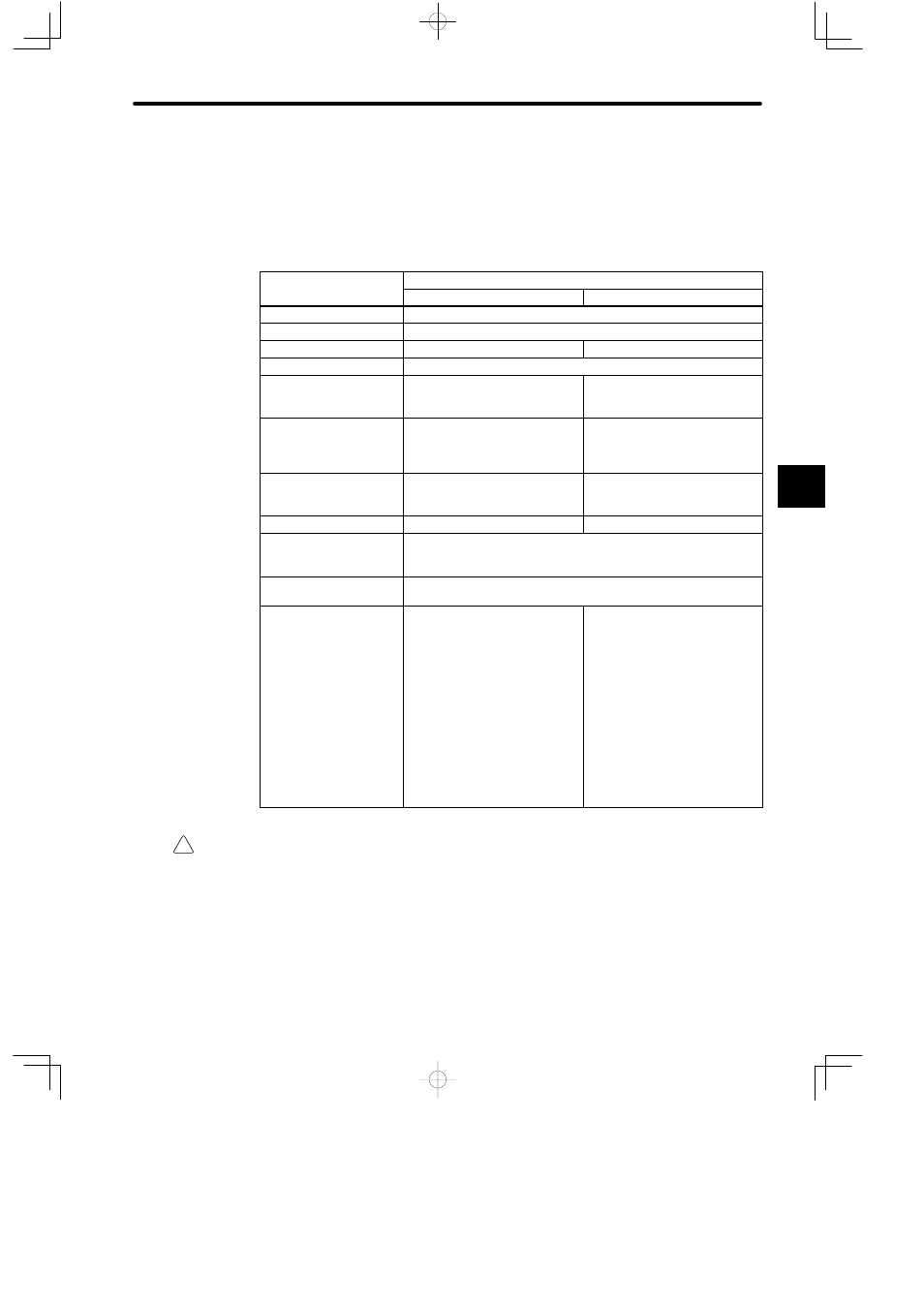Yaskawa MEMOCON GL120 User Manual
Page 225

!
4.4 Communications Modules
— 4-169 —
2) Performance Specifications
The following table shows the communications specifications of the Uniwire (H) I/F.
Table 4.71 Communications Specifications
Item
Specifications
H-System
Normal System
Communications Method
Interactive time-sharing multiplex
Synchronization Method
Bit synchronous
Protocol
H-System Protocol
Uniwire Protocol
Transmission Medium
Twisted-pair cable: 0.5 mm@ min.
Transmission Distance
Set on DIP switch
500 m mode: 500 m max.
200 m mode: 200 m max.
Set on DIP switch
500 m mode: 500 m max.
200 m mode: 200 m max.
Baud Rate
Depends on transmission
distance mode
500 m mode: 14.7 kbps
200 m mode: 29.4 kbps
Depends on transmission
distance mode
500 m mode: 14.3 kbps
200 m mode: 28.5 kbps
Refresh Time
9.3 ms for 256 transmission
points in transmission distance
200 m mode
9.3 ms for 256 transmission
points in transmission distance
200 m mode
ID Bit Length
8 bits
No ID bits
Number of Stations
50 max.
Up to 50 Address Units or Address-incorporated I/O Units can be
connected.
Maximum Number of
Transmission Points
256 points, 1 register is 16 points.
Maximum Number of
Allocated Points
368 points, 1 register is 16
points.
This is the total of the
transmission points and items 1
and 2, below.
1. An input register and 16 input
relays are used to monitor the
Uniwire (H) I/F and Uniwire
System status.
2. For the H-System, six input
registers are used to monitor
error information on I/O Units.
272 points, 1 register is 16
points.
This is the total of the
transmission points and item 1,
below.
1. An input register and 16 input
relays are used to monitor the
Uniwire (H) I/F and Uniwire
System status.
Note The Normal System does
not support a function to
monitor error information
on I/O Units.
Caution
Transmitting Numerical or Coded Data
The Uniwire System detects transmission errors by rechecking bit status. For this reason, bits
for which errors are detected are not changed and the status that is transferred may be incor-
rect. Check or retransfer data when a transmission error occurs.
4
